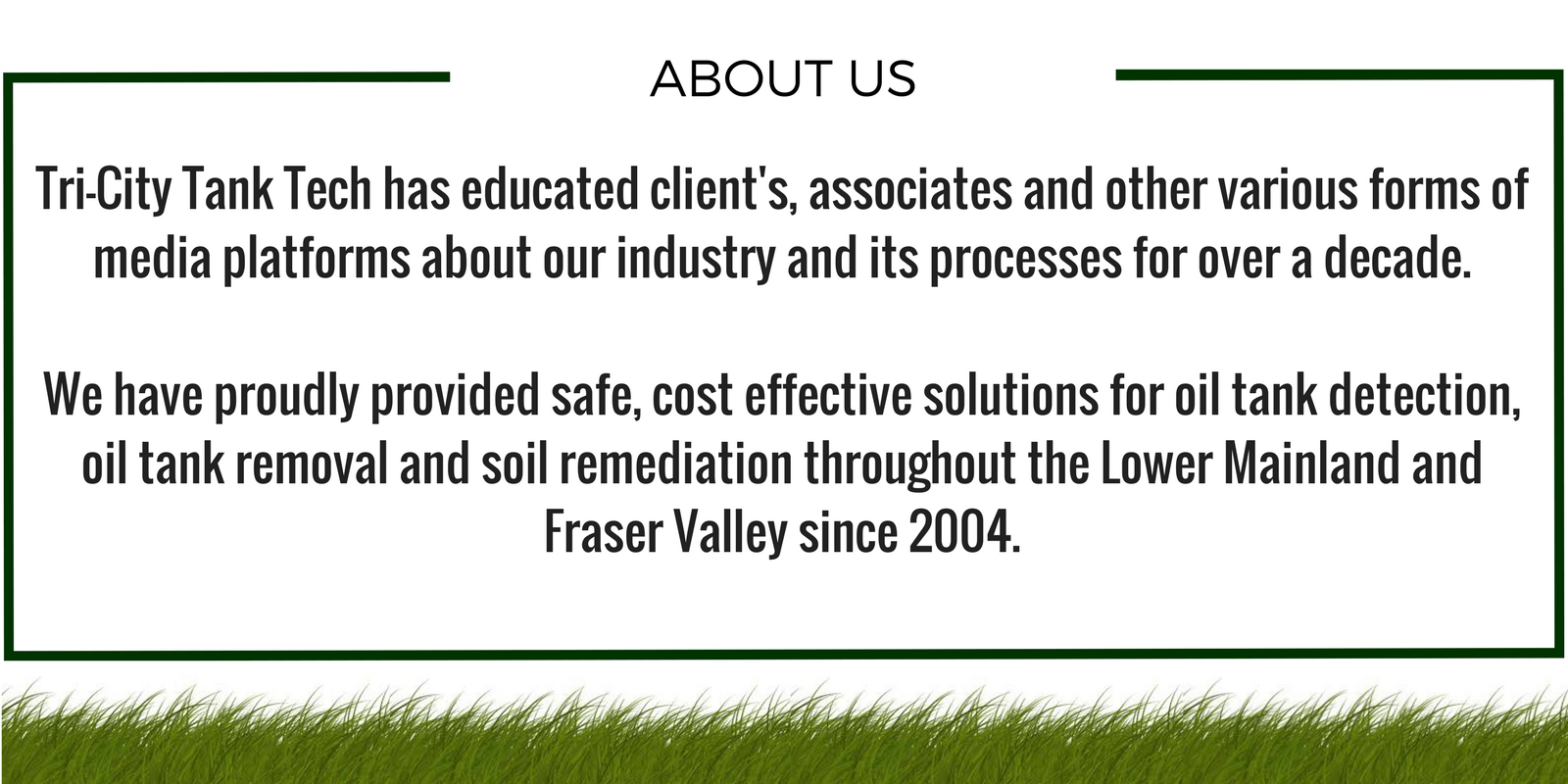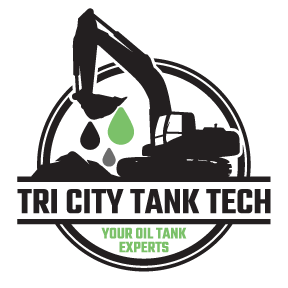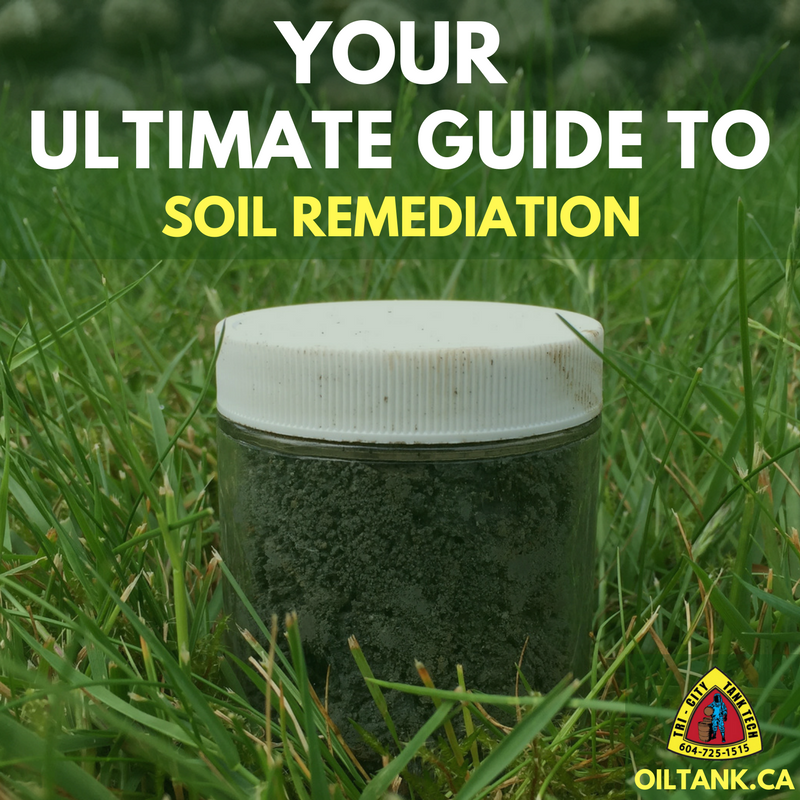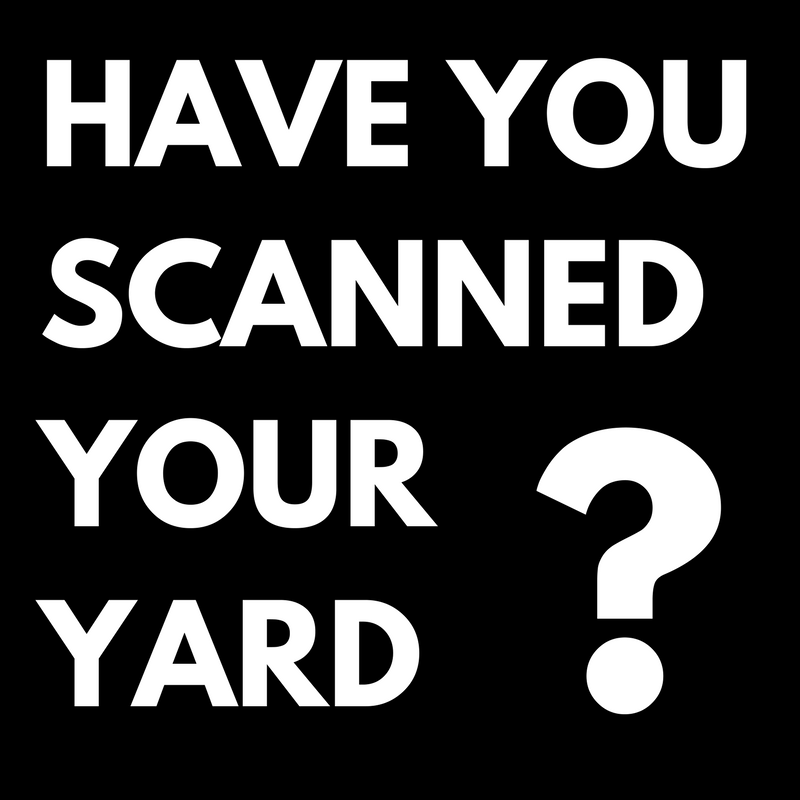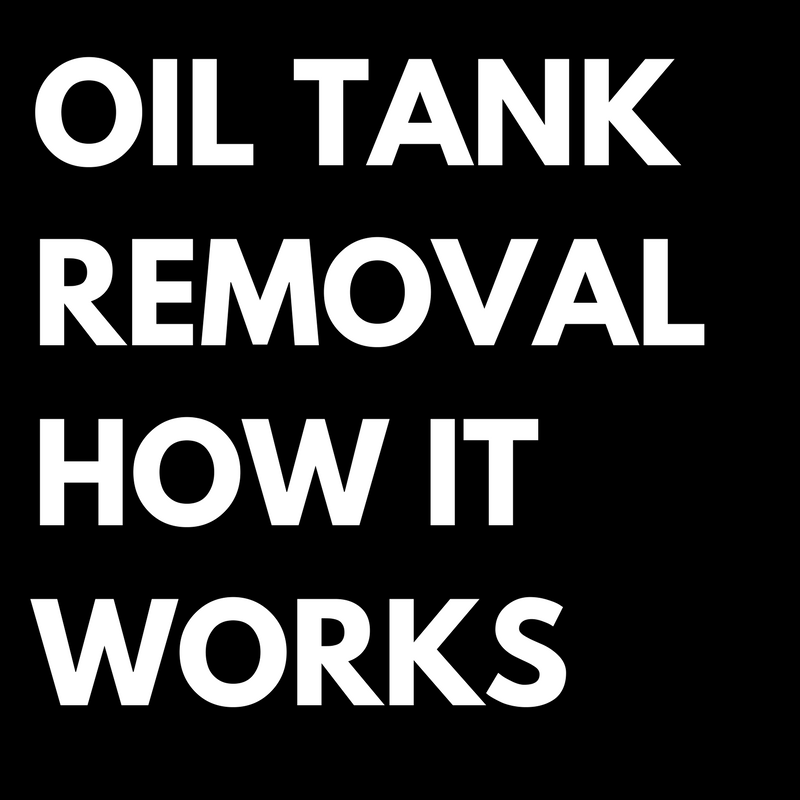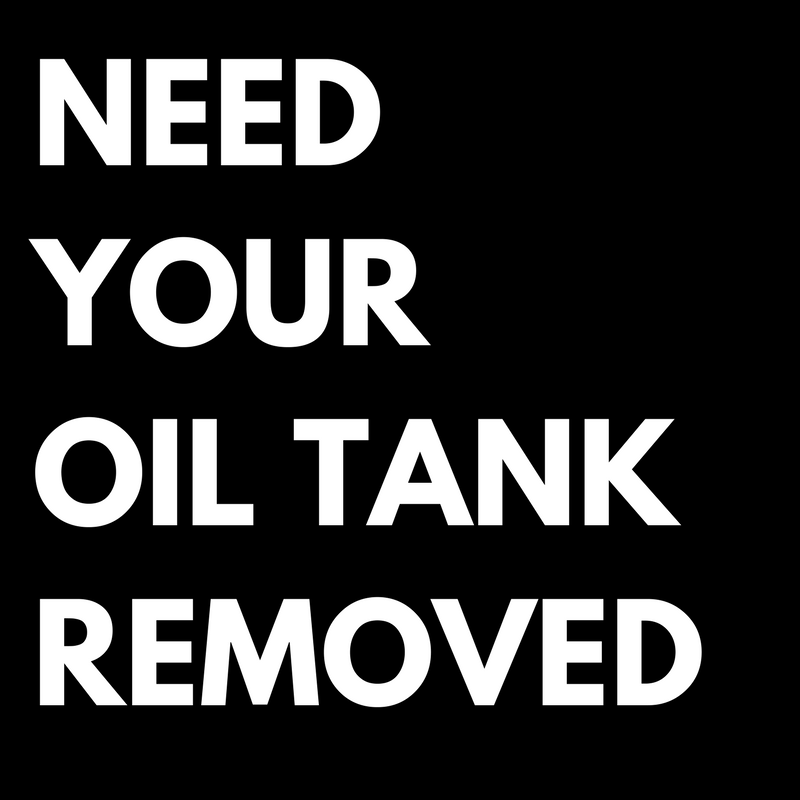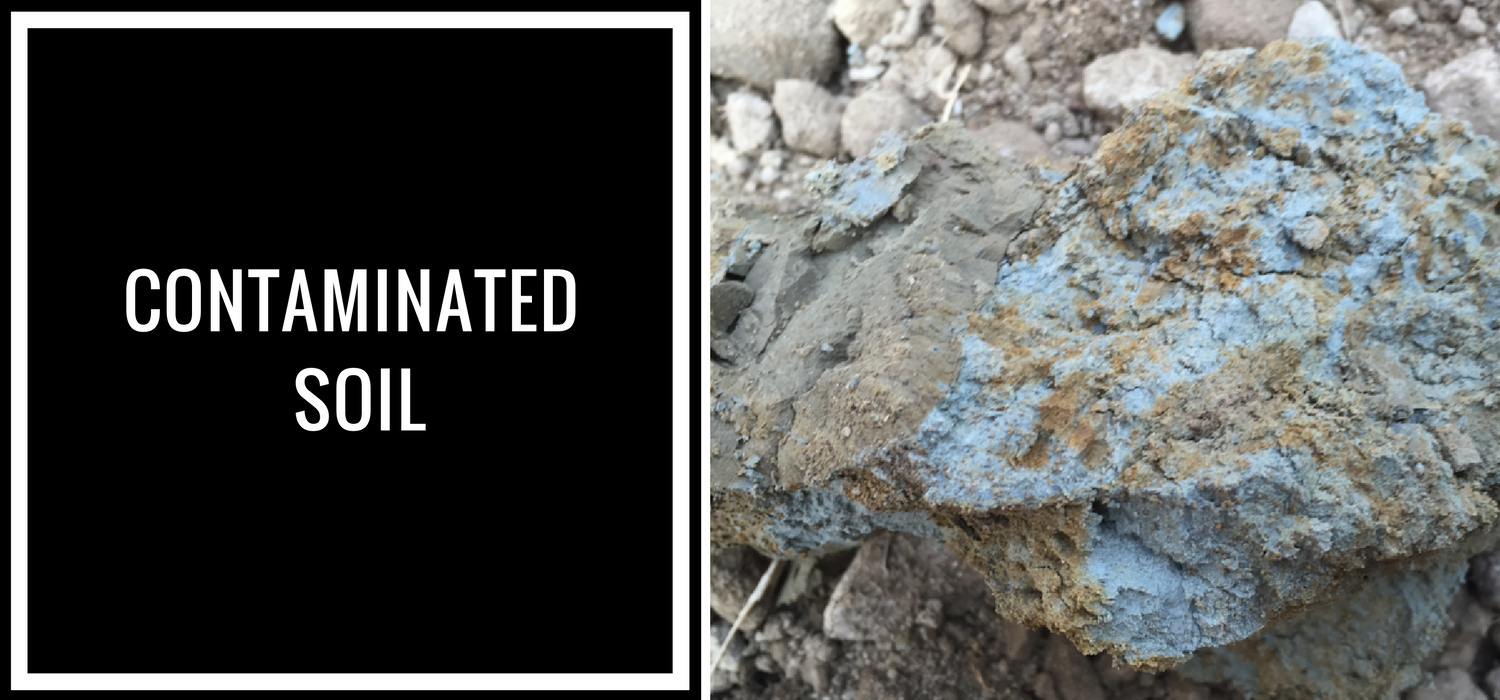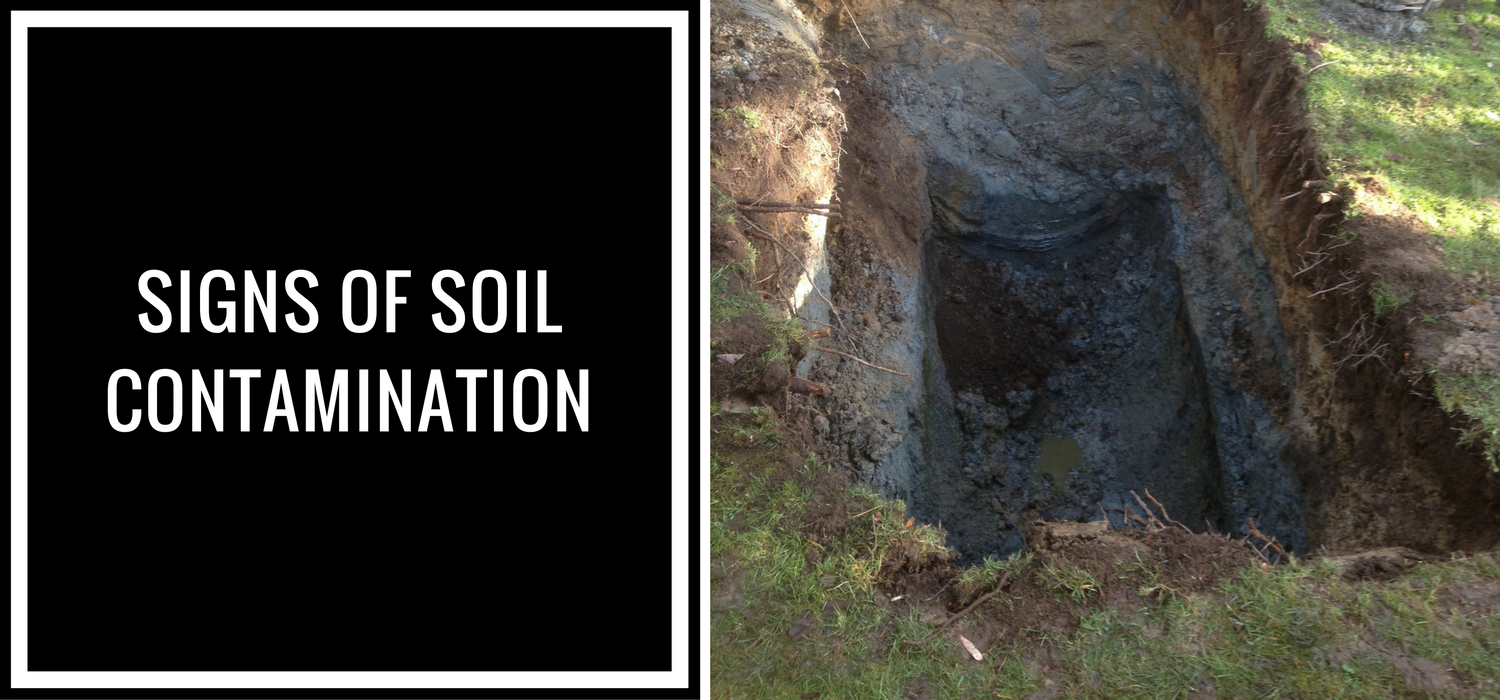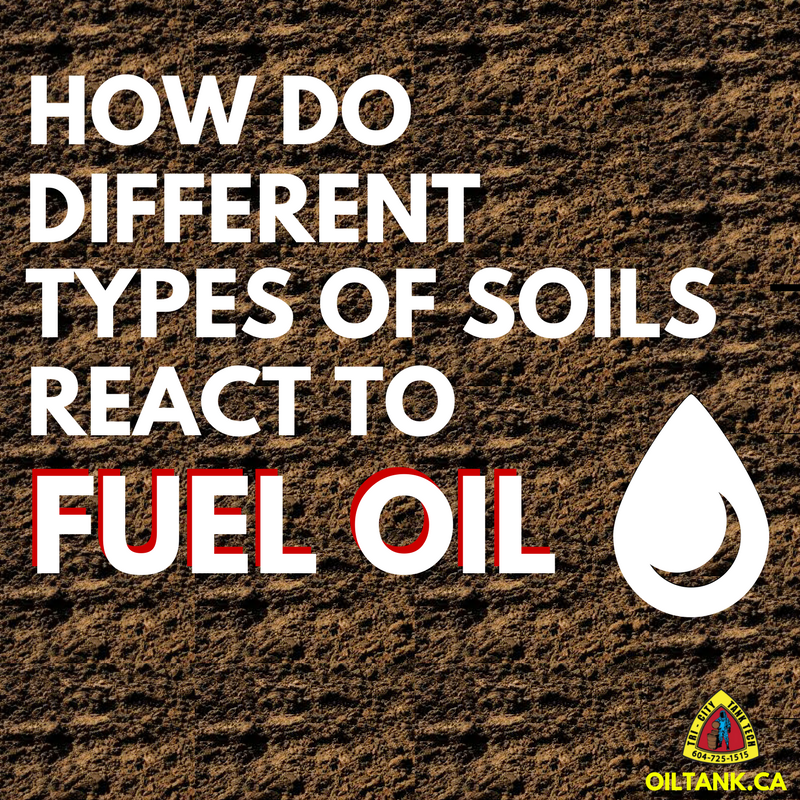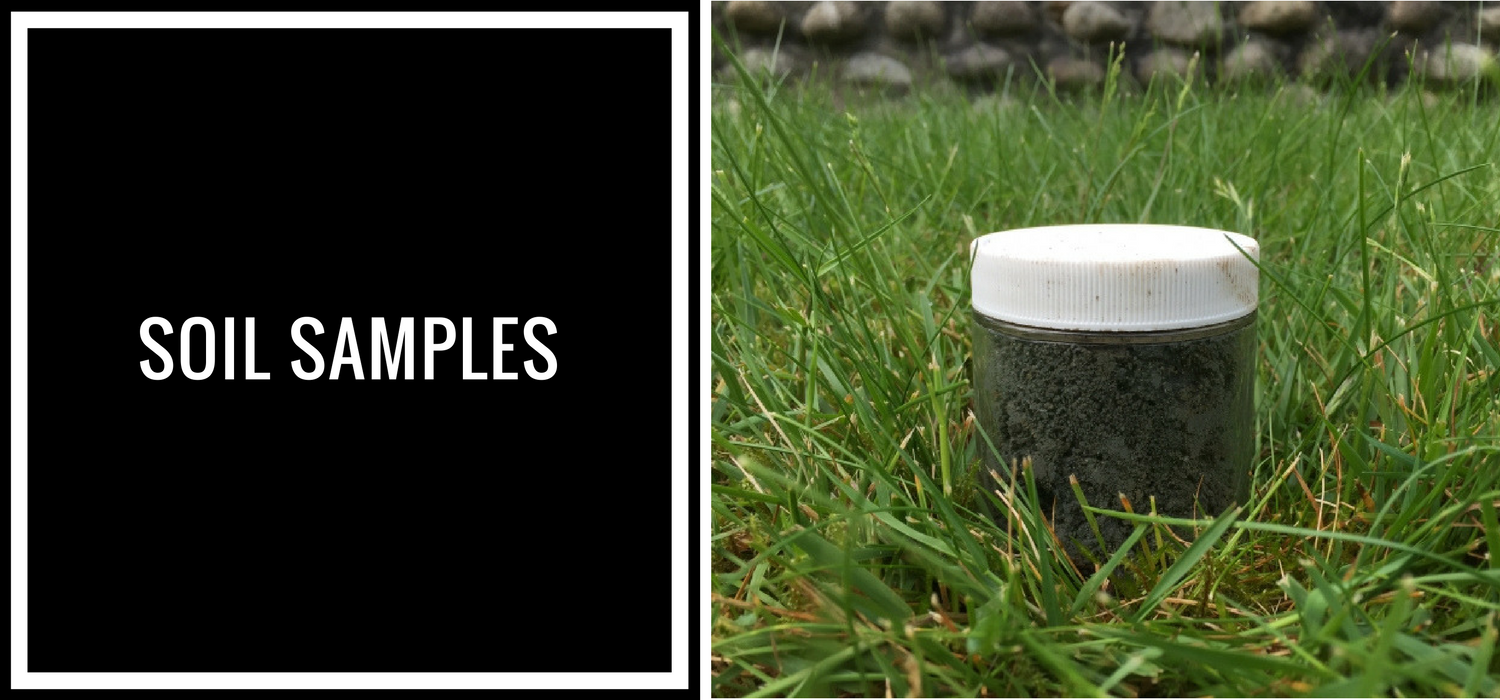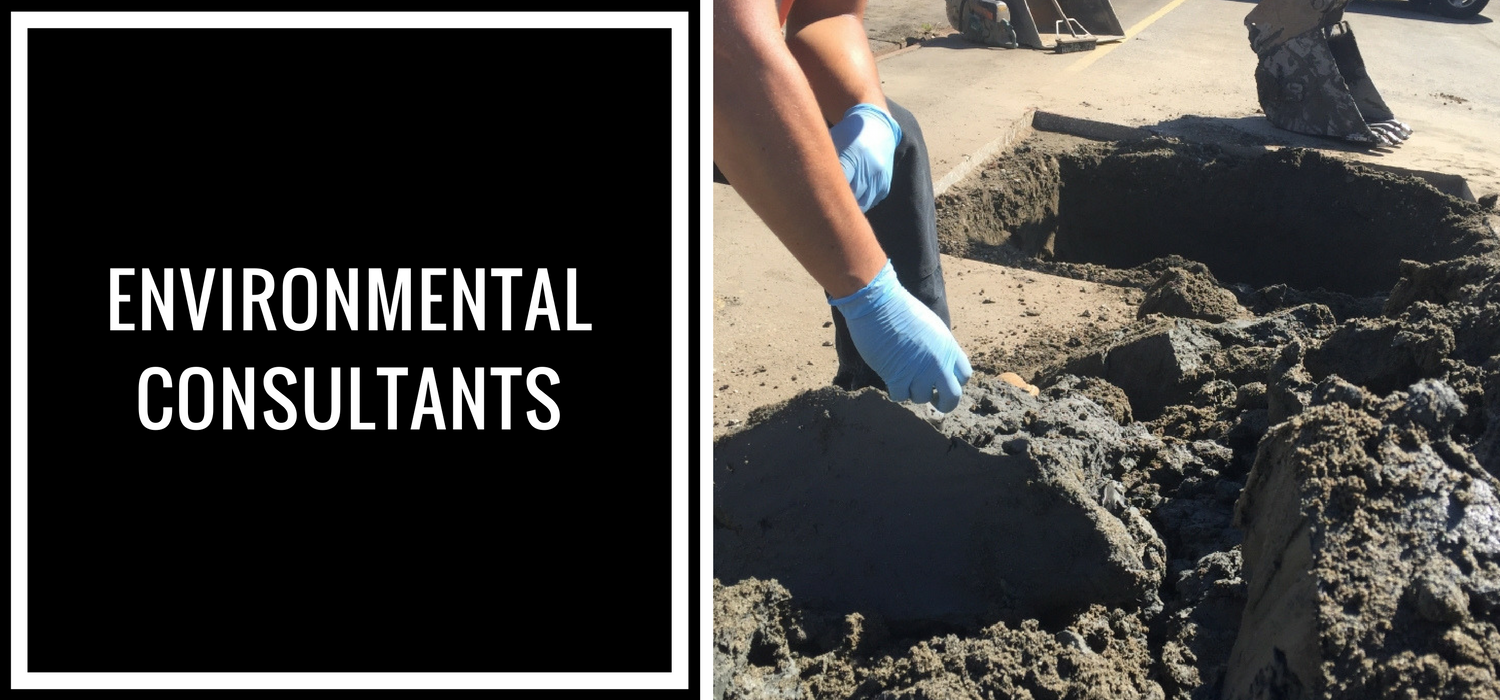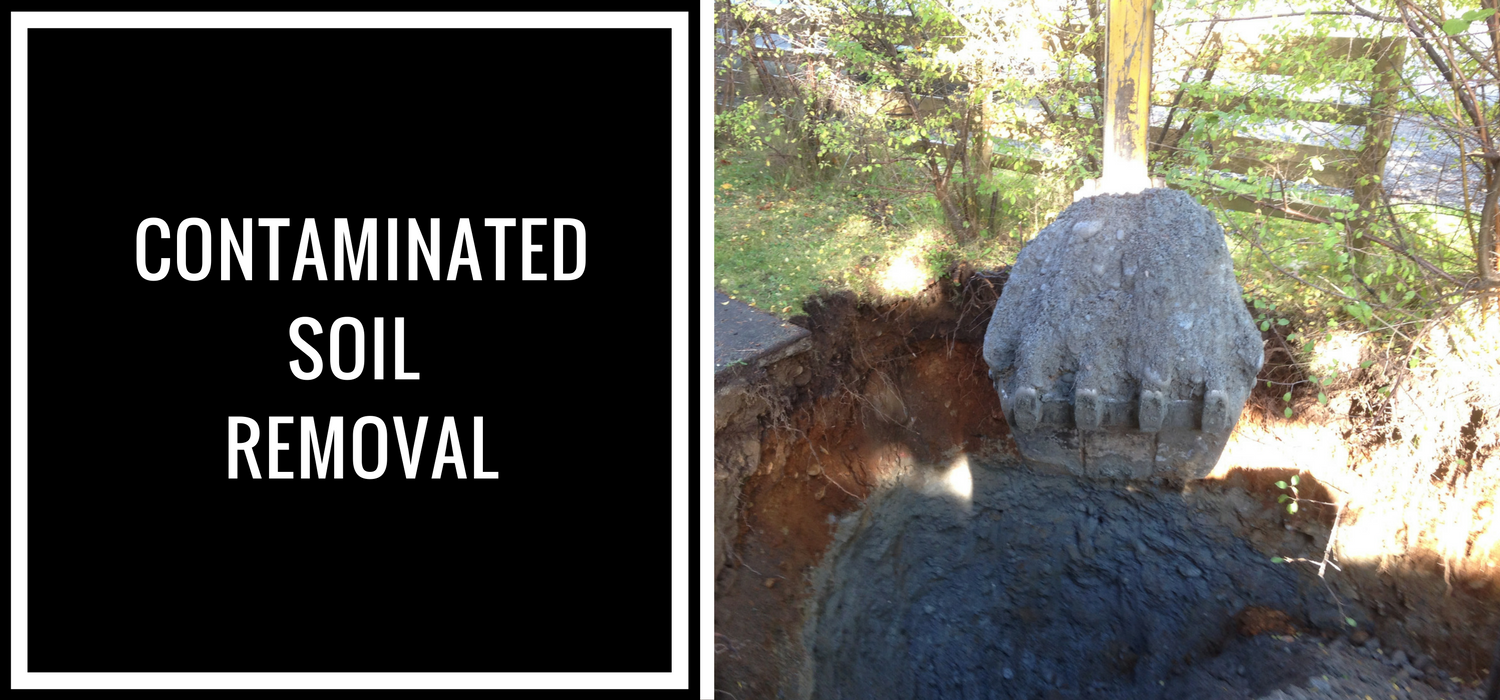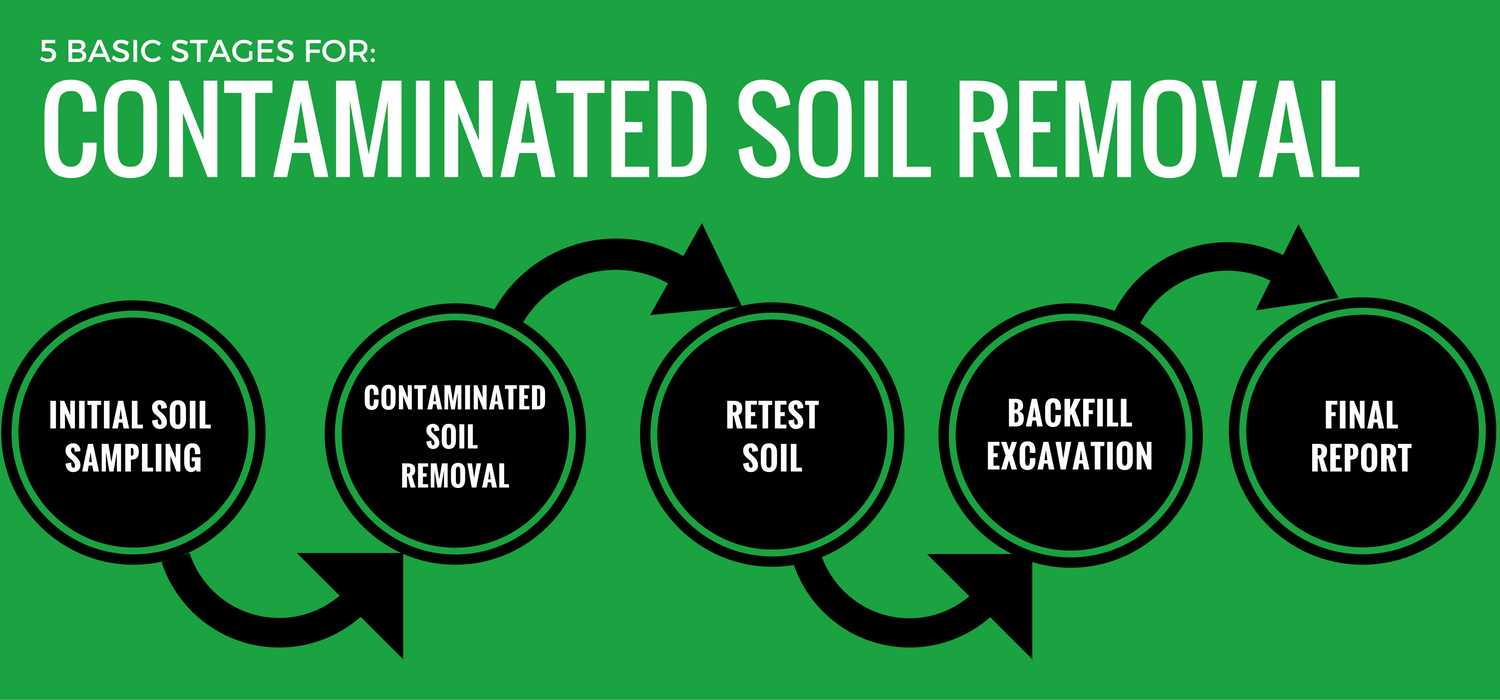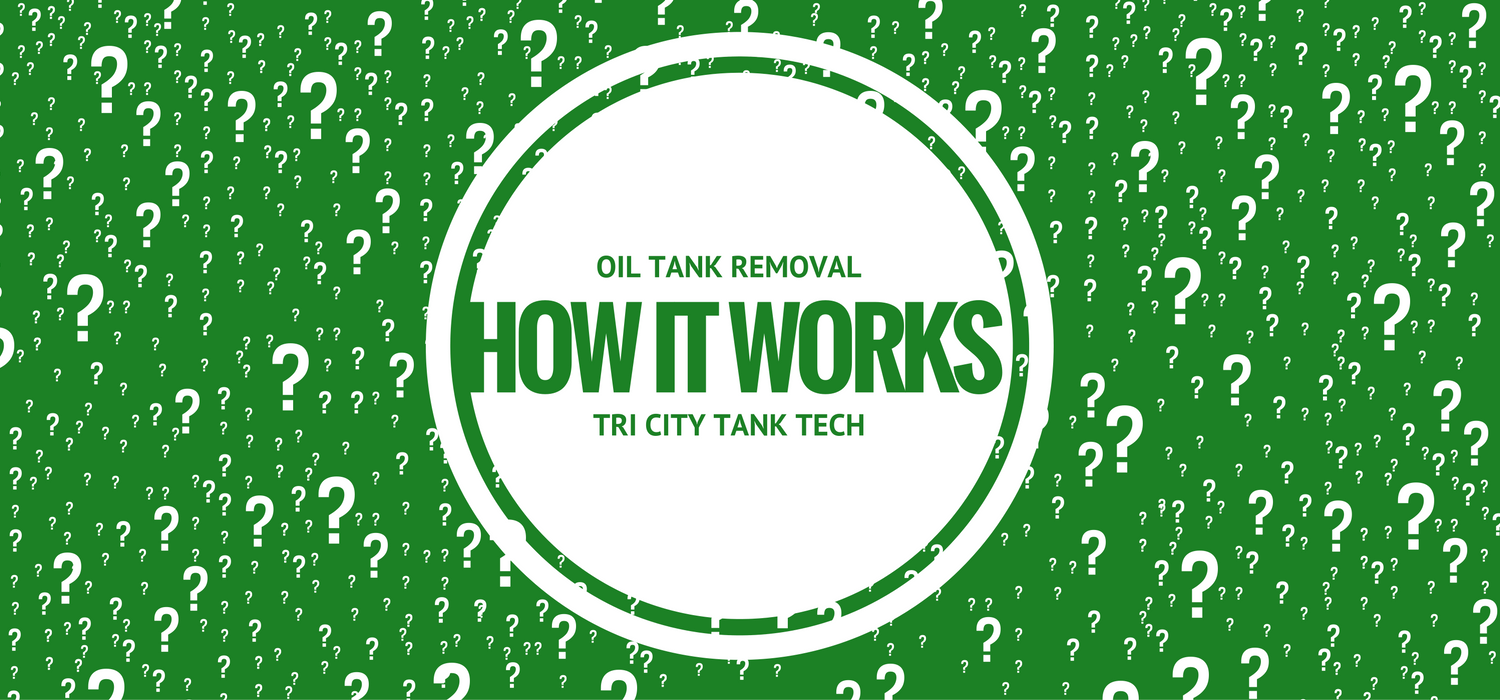Contaminated soil removal and soil remediation are typically the most feared aspect of the oil tank removal process.
Usually, when people are trying to do research about oil tank removals they come across horror stories of $50,000 and $80,000 contaminated soil removal projects.
These articles are typically newsworthy extreme case scenarios that do not accurately assess what is usually involved in a standard oil tank removal project.
Yes, there are unfortunately extreme cases that can become quite costly, but we find that these scenarios are not very common.
Once a property owner finds out that they have an oil tank on their property, many questions start coming to mind:
- Has my oil tank leaked?
- How much-contaminated soil is on my property?
Hopefully, after you read this article you feel a little more comfortable about the process and what to expect
WHY CHOOSE US
FIND OUT WHY TRI CITY TANK TECH IS THE PREFERRED CHOICE OF REALTORS, BANKS, HOME INSPECTORS AND MORE...TRI CITY TANK TECH | YOUR OIL TANK REMOVAL EXPERT
- COMPETITVE PRICING
- FREE QUOTES
- QUICK RESPONSE TIMES
- KNOWLEDGABLE STAFF
- EXPERIENCED
- HIGH QUALITY EQUIPMENT
- QUALITY SERVICE
- A+ BBB
- INSURANCE COVERAGE
- WORKSAFE COVERAGE
What Is Soil Contamination?
When it comes to contaminated soil removal, it would be helpful to understand what constitutes as contaminated soil.
According to the definition adopted by the government of Canada:
A contaminated site is “one at which substances occur at concentrations above background (normally occurring) levels and pose or are likely to pose an immediate or long term hazard to human health or the environment, or exceeding levels specified in policies and regulations.”
Great… now how does this apply to your oil tank removal or contaminated soil removal
For a standard residential oil tank removal, to meet the minimum requirements, the surrounding soils are tested for Extracted Petroleum Hydrocarbons (EPH).
If the levels are above 1000 EPH, then soil remediation should take place. If the levels are below 1000 EPH, then you are approved to backfill.
Contaminated Soil Removal: Reasons Why It Should Be Removed
Human Health Risks: Avoiding potential risk to human health is typically the main concern associated contaminated soils.
Some issues that could affect humans directly are, but not limited to:
- Direct contact with soils
- Harmful vapours entering your home
- Contaminants entering your water supply: well water etc.
- Environmental Risks: Avoiding potential surrounding environmental issues, such as, but not limited to: Contaminating nearby ecosystems: rivers, streams etc
- Property Value: The presence of contamination on your property may dramatic effect its value or marketability.
- Liabilities: There is a potential risk that your contamination will spread further over time, costing you more money in the future. Additionally, if your contamination spreads further, over time there is a possibility that it can migrate onto a neighbouring property
Contaminated Soil Removal:
Common Indicators Of Suspected Soil Contamination
On-site, there are 2 main indications that your oil tank may have leaked into the surrounding soils.
1. Discolouration in the soil: The release of hydrocarbons into the surrounding soil from your oil tank will usually result in the affected soil changing to a noticeable blue color.
2. Odorous Soil: If your oil tank has leaked into the surrounding soil, you may be able to smell fuel oil in the soil.
Keep in mind that these indicators do not necessarily mean that your property is contaminated.
These are just on-site signs that can help identify if there is suspected contaminated soil on the property.
The most accurate way to assess your soil for contamination is for an environmental consultant to take samples to a laboratory for analysis.
Different types of soils can affect on-site indications and how the oil travels through the soil.
Contaminated Soil Removal:
Soil Sampling
Once your oil tank has been removed, the most important part of the process is to determine if your oil tank has leaked into the surrounding soils.
At the most basic level in residential sampling, soils should be tested for the presence of Extracted Petroleum Hydrocarbons (EPH).
If the EPH levels are over the legal limit of 1000 EPH (set by the Ministry of Environment), then the property is considered contaminated.
Depending on the contents, if your storage tank contains products other than fuel heating oil, your soil may need to be tested for additional types of contaminates. This is more common with commericial storage tanks that can contain chemicals, gasoline or various other products.
Prior to your oil tank being extracted, Tri-City Tank Tech would have synchronized the schedule to ensure that the environmental consultant is on-site at the optimal time for sampling.
During an oil tank removal it is important to take soil samples once your oil tank is removed for 2 reasons:
Water Issues
Depending on the property and weather conditions, once your oil tank is removed the excavation may start filling with water.
When the soil samples that are taken, they should be as dry as possible to provide an accurate reading.
If the excavation fills with water, it can be difficult to obtain the proper soil samples.
Cost
If the consultant does not take the soil samples right after the oil tank is removed, the vacuum truck may have to stay on site or be rescheduled to pump the excavation at a later date to take proper soil samples.
This is why we sychronize the environmental consultant to arrive as close to the scheduled oil tank removal time as possible.
Also, if the consultant is on-site for the entire day they will charge substantially more than if they came at the optimal time for soil sampling.
The amount or type of soil samples can vary depending on the size of the excavation, the type of property, and the types of suspected contaminants involved.
During the soil sampling of a standard residential oil tank removal excavation, an environmental consultant will typically take 5 soil samples to provide a better assessment of the excavation:
• Northern Wall
• Southern Wall
• Eastern Wall
• Southern Wall
• Base (floor of the excavation).
Usually waiting on the soil sample results can be longest part of your oil tank removal process. The standard turnaround time for your soil samples at the laboratory is usually 5-7 business days
If you need your soil sample results quicker, the laboratory will typically charge double to receive your soil samples within a 24-48 hr time window.
Soil Sampling:
Environmental Consultants
The most important reasons to hire an independent environmental consultant:
Municipality Regulations
Most cities now require that an environmental consultant collect the appropriate soil samples during the oil tank removal process.
Some cities may not currently require an environmental consultant to take your soil samples, but they may be in the process of changing that rule or may require one in the near future.
If your soil was sampled by an oil tank removal company prior to the city changing their regulations, you may be still be ok, but it would depend on what there new regulations allow.
Additionally, some prospective buyers may feel uncomfortable that the current standards are not met and may request that the soil is retested.
Appeasing Other Parties Requirements
Buyers, lenders, and insurance companies may have different requirements than that of your city.
Some outside parties may require an environmental consultants report, even if your oil tank removal was completed in accordance with your local municipality regulations.
Knowledge
It is important to hire someone who has been properly trained to collect, document and analyze your soil results properly.
Proper Reporting
If an oil tank company takes your samples they most likely will only provide you with the soil sample results in your final report. In comparison, environmental consultants provide a detailed environmental report.
Avoiding Future Issues
Apart from the fact that if your city changes its regulations and a consultant is required in the future for sampling.
By contracting an environmental consultant to collect your samples, it is less likely that a 3rd party will challenge their detailed environmental report.
3rd Party Opinion
We feel it is better to have an independent assessment of your soils to avoid any conflict of interest.
If an oil tank company has their own in-house consultant, we recommend that you may want to use an outside environmental consultant instead to make sure that there is no conflict of interest.
Contaminated Soil Removal:
How Much Soil Gets Removed and How Much Does It Cost ?
How much soil needs to be removed and how much will it all cost?
Unfortunately, this is a very difficult question to answer and yet is the most important thing that clients want to know.
Contaminated soil removal quotations are typically based on 3 factors:
1. Accessibility
2. Obstructions
3. Type of Contaminants
Each properties layout and obstructions are unique, so there is no standard quotation for contaminated soil removal.
We charge our clients how we are charged from the disposal facility, by the ton.
We provide transparent and competitive quotations (with no hidden costs).
Our quotations include labor, disposal fees, bin rental, and backfill materials.
The reason why it is so difficult to assess the volume of contamination on a property is because there are many factors that contribute to the spread of contamination.
The 5 main factors that lead to the spread of contamination are:
1. Water Tables
2. Soil Conditions
3. How Much Oil Was Left The Tank
4. When Did The Oil Tank Start Leaking
5. Topography
Knowing what you know now, you can probably see why it is difficult to give an exact volume estimate.
With so many variables, each property should be assessed on a case by case basis.
For example, we could remove your oil tank and there is little to no soil contamination present.
However, your neighbour may contract us to remove their oil tank and it may have leaked substantially.
A drill core assessment is one-way to obtain an approximate volume of contaminated soil on a property.
However, this form of investigation can be costly and is not always an option if there is limited access to the property.
Additionally, depending on the drilling conditions, you will probably only get an approximate volume of contamination on the property.
This method of investigation is usually done on commercial properties.
Warning: If a company tells you exactly how much soil contamination is present before they start excavating or removing your oil tank… be cautious.
IMPORTANT: We feel that without soil samples results, nobody can accurately assess if a property is contaminated.
Furthermore, without drill core assessments, it is improbable that someone can give an accurate exact volume contaminated soil on your property.
If someone makes an assessment without sampling or drilling, it is most likely based on a guesstimate.
Guesstimates can be deceiving and cost you more than you bargained for.
Warning: Some companies may try to tell you that your oil tank has or hasn’t leaked even before they have removed your oil tank.
They may do this for a couple reasons:
To create a false sense of security
To ease your anxieties about your oil tank the oil tank removal company may mention during your oil tank removal quotation that there is no signs of soil contamination on your property to get the job.
They may also comment on “how green your grass is” or “how your garden is thriving” in the area of your oil tank.
It is important to note that typically unless your water table is quite high or your oil tank is buried shallow, soil contamination tends to be deeper than your grass or garden root structures.
Knowing this, you can see why basing the existance of soil contamination on the health of the vegetation above your oil tank is not an accurate way of assessing for soil contamination .
They are trying to take advantage of the situation
Because our industry is quite new compared to other trades, many people do not have much knowledge regaurding the oil tank removal process.
Unfortunately, some oil tank removal companies will take try to advantage of this.
5 Stages of Contaminated Soil Removal
Stage 1: Soil Sampling
Sample your excavation for soil contaminants after your oil tank has been removed.
Stage 2: Contaminated Soil Removal
Remove your contaminated soil
Stage 3: Re-Testing The Soil
Retest your soil to confirm that the necessary soil contamination has been removed
Stage 4: Backfill And Clean Up
After your soil samples have passed, we backfill the excavation and clean up your property at no additional cost.
Stage 5: Final report
Once your oil tank removal project is finalized, your final reports will be issued.
Tri City Tank Tech will provide you with our oil tank/contaminated soil removal report and also forward your report to the appropriate governing body.
Separately, the environmental consultant will send you their environmental report and also forward your report to the appropriate governing bodies .
Thank you for reading our blog. We hope by reading this article you have gained a better understanding of the contaminated soil removal process.
If you enjoyed reading this post, make sure you check out more related informative blogs.

Matthew Szwaba
Chief Operating Officer
604-715-1000
Tri-City Tank Tech ltd
